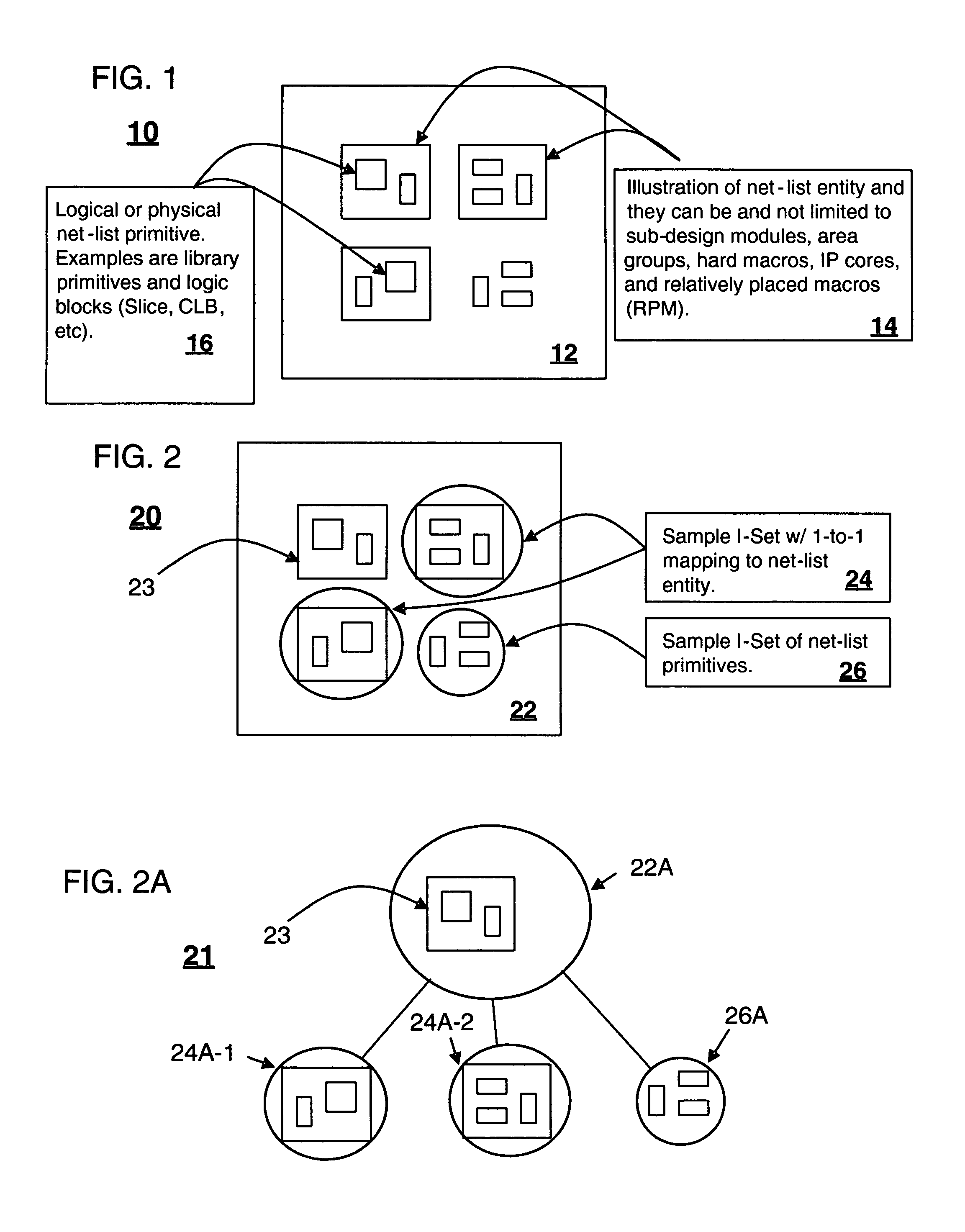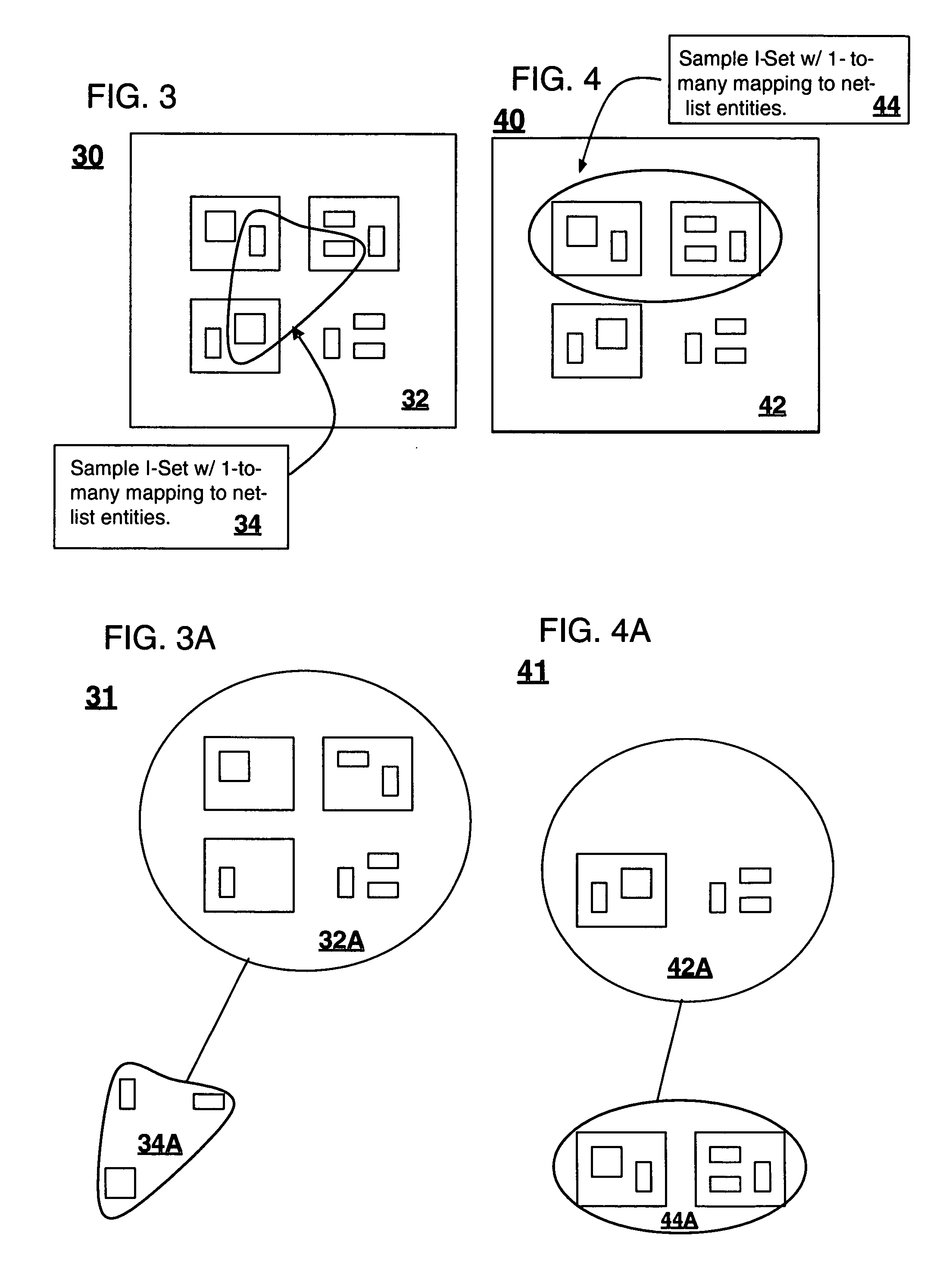Method and system for implementing a circuit design in a tree representation
a tree representation and circuit design technology, applied in the field of circuit design, can solve the problems of increasing the complexity and size of fpga design, complex xilinx fpga devices, and the complexity of circuit designs, and achieve the effect of simplifying the interface of circuit designs to the underlying net-list information
- Summary
- Abstract
- Description
- Claims
- Application Information
AI Technical Summary
Benefits of technology
Problems solved by technology
Method used
Image
Examples
Embodiment Construction
[0038]The present invention provides a solution for simplifying the implementation of circuit designs and associated maintenance without limiting or restricting granularity by using an abstraction called implementation sets or I-Sets.
[0039]Circuit designs or circuit design representations can include any physical description of a circuit design in terms of the components to be used, including but not limited to, net-lists, circuit descriptions conforming to open standards such as the Berkeley Logic Interchange Format (BLIF), as well as circuit descriptions conforming to proprietary standards such as Native Circuit Description as used by Xilinx, Inc. of San Jose, Calif. For example, as shown in FIG. 1, a sample circuit design representation 10 can include a circuit design 12 having a plurality of net-list entities 14 such as sub-design modules, user floor planned partitions (e.g., area groups), hard macros, IP cores, and relatively placed macros each having logical or physical net-li...
PUM
 Login to View More
Login to View More Abstract
Description
Claims
Application Information
 Login to View More
Login to View More - R&D
- Intellectual Property
- Life Sciences
- Materials
- Tech Scout
- Unparalleled Data Quality
- Higher Quality Content
- 60% Fewer Hallucinations
Browse by: Latest US Patents, China's latest patents, Technical Efficacy Thesaurus, Application Domain, Technology Topic, Popular Technical Reports.
© 2025 PatSnap. All rights reserved.Legal|Privacy policy|Modern Slavery Act Transparency Statement|Sitemap|About US| Contact US: help@patsnap.com



